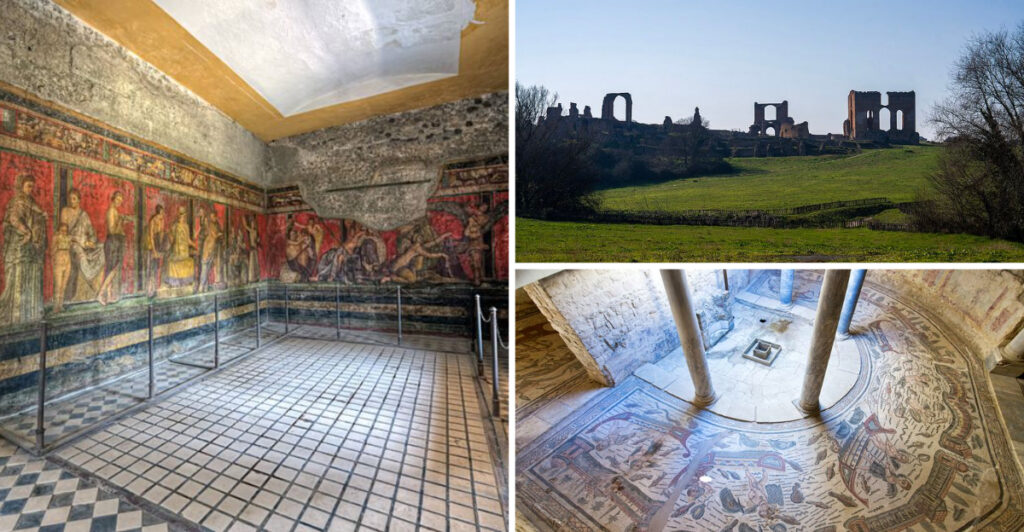Explore the fascinating world of ancient Roman villas that have withstood the test of time. These architectural marvels not only provide a glimpse into the lavish lifestyles of Roman elites but also tell a story of resilience and survival through centuries of change. Each villa, with its unique history and design, offers insight into the cultural and social dynamics of ancient Rome.
Villa Romana del Casale
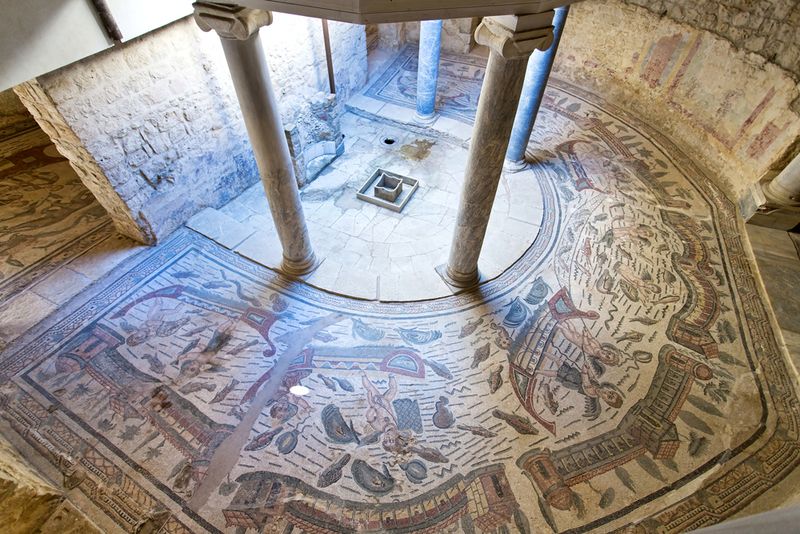
Nestled in the heart of Sicily, the Villa Romana del Casale enchants visitors with its remarkable mosaics. These intricate designs, portraying scenes from mythology and everyday life, are a testament to the villa’s opulence. The villa once belonged to a powerful Roman senator, whose love for art and culture is evident in every corner.
As you stroll through its vast rooms, the history of ancient Rome comes alive. The villa’s ability to survive natural disasters and human conflicts exemplifies its resilience. Today, it stands as a UNESCO World Heritage site, attracting tourists and scholars alike.
Villa of the Mysteries
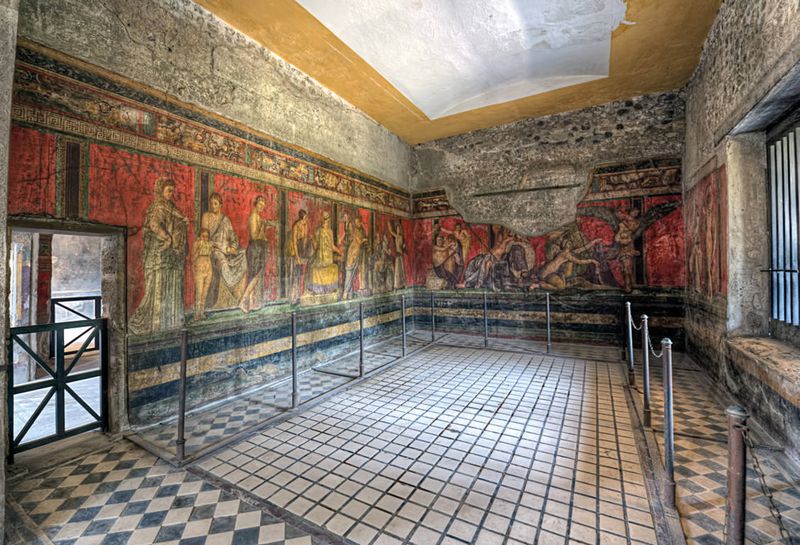
Near the ruins of Pompeii lies the enigmatic Villa of the Mysteries. Its name is derived from the captivating frescoes that adorn the walls, depicting mysterious rituals. The vibrant colors and intricate details of these paintings offer a glimpse into ancient Roman religious practices.
Despite the catastrophic eruption of Mount Vesuvius, the villa remarkably survived, preserving its unique artistry. Walking through its chambers, one can almost hear whispers of ancient secrets. This villa remains a symbol of endurance, drawing historians and art enthusiasts from all over the world.
Villa Adriana
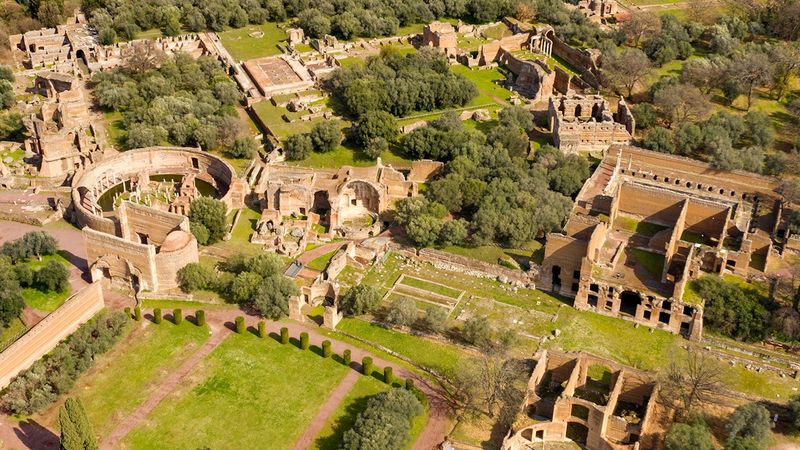
Emperor Hadrian’s Villa Adriana in Tivoli is a testament to Roman engineering prowess. Spanning over 250 acres, this villa complex features lavish gardens, serene pools, and grand architectural designs. Each structure within the villa reflects Hadrian’s fascination with different cultures.
Visiting this villa is like stepping into a luxurious retreat from the past. Despite centuries of wear and tear, the villa’s structures remain an impressive sight. An oasis of beauty and innovation, Villa Adriana continues to inspire architects and historians, showcasing the grandeur of ancient Roman civilization.
Villa Jovis
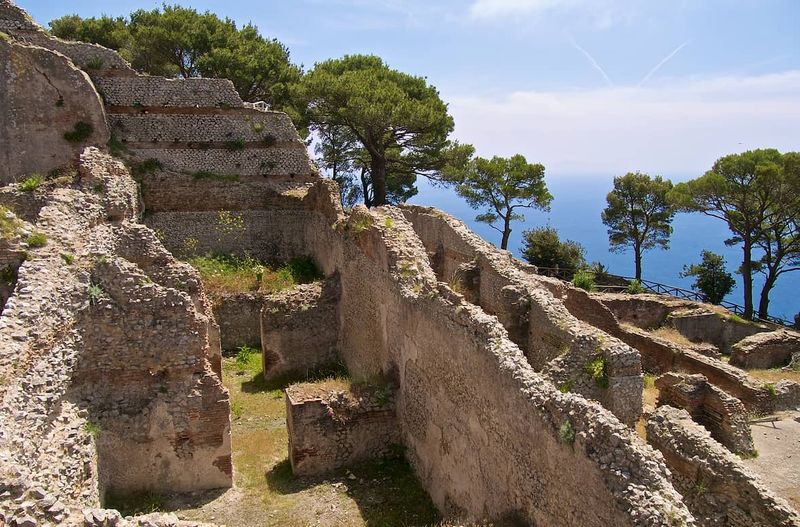
Perched on the cliffs of Capri, Villa Jovis was once Emperor Tiberius’s grand retreat. The villa offers breathtaking views of the sea, emphasizing the emperor’s desire for both luxury and isolation. Its strategic location allowed Tiberius to rule Rome from afar.
Exploring the ruins, one is reminded of the villa’s opulent past. Despite the ravages of time, the villa’s grandeur is undeniable. Today, the site is a popular tourist destination, inviting visitors to imagine the power and solitude of its imperial past. Villa Jovis is a remarkable example of Roman architectural innovation.
Villa Poppaea
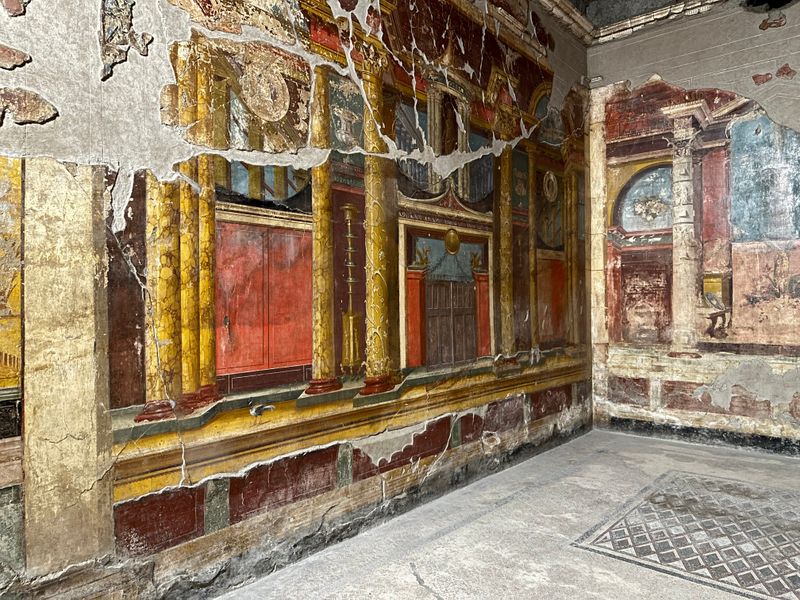
Located in Oplontis, the Villa Poppaea was a luxurious retreat believed to belong to Emperor Nero’s wife, Poppaea Sabina. Adorned with stunning frescoes and expansive gardens, the villa reflects the splendor of Roman elite life. The art and architecture reveal a world of sophistication and style.
Despite being buried by the eruption of Mount Vesuvius, the villa was remarkably preserved under layers of ash. Its rediscovery offers an invaluable peek into the past. The Villa Poppaea stands as a testament to survival, captivating archaeologists and visitors with its enduring beauty and history.
Villa of the Quintilii
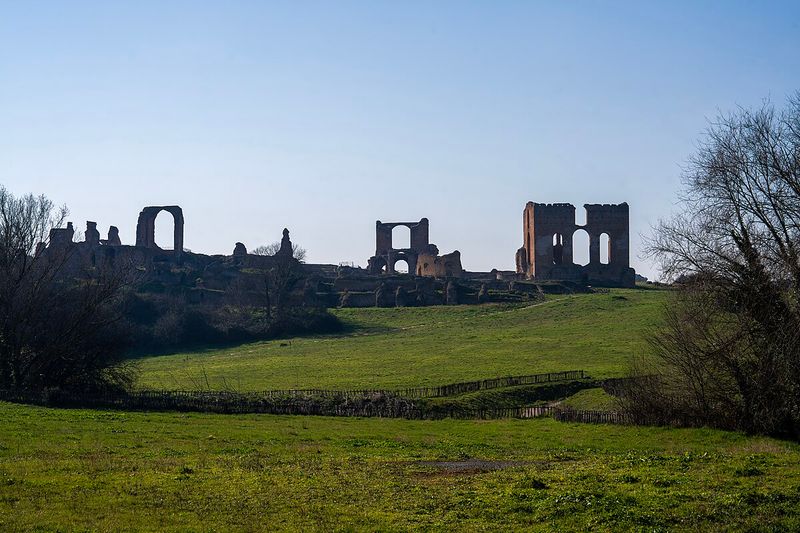
Nestled along the ancient Via Appia, the Villa of the Quintilii whispers tales of opulence and power. Once owned by Emperors, its sprawling gardens and grand halls speak of a bygone era.
Imagine the laughter echoing through corridors adorned with marble and frescoes. Today, the ruins stand resilient, a testament to Roman ingenuity and luxury. Visitors can almost hear the rustle of olive trees in the gentle breeze.
This villa’s story is woven with intrigue, power struggles, and remnants of a lavish lifestyle, captivating those who wander its ancient paths.
Villa of Livia

Perched on the Palatine Hill, the Villa of Livia was a sanctuary of tranquility and beauty. Home to Livia Drusilla, the wife of Emperor Augustus, it whispered the elegance of Rome’s golden age.
The villa’s frescoes, depicting lavish gardens, transport visitors back in time. The serene ambiance of the villa still lingers, offering a glimpse into the peaceful retreats of Roman nobility.
Its walls, painted with stories, bear witness to the resilience and splendor of Roman art and architecture, inspiring awe in modern-day explorers.
Villa of the Papyri
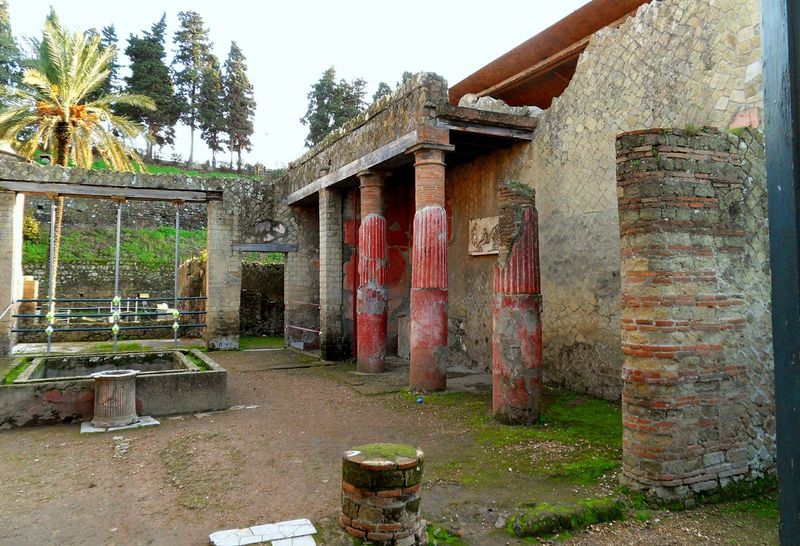
Situated in Herculaneum, the Villa of the Papyri is an emblem of cultural wealth and survival. It harbors a rare library of papyrus scrolls, providing invaluable insights into Roman thought.
The villa’s architecture reflects a blend of luxury and intellectual pursuit, with its large gardens and elaborate sculptures. Despite the ravages of time, it stands as a beacon of knowledge.
Unearthed from volcanic ashes, the villa tells a tale of perseverance, offering a rare glimpse into the intellectual pursuits of ancient Rome.
Villa dei Volusii

The Villa dei Volusii, nestled in the lush Sabine Hills, is a symbol of Roman resilience. Known for its exquisite mosaic floors, it captures the artistic flair of the era.
The intricate designs tell stories of myths and daily life, preserved through centuries. Today, the villa’s remains echo the voices of its past inhabitants, mingling with the rustle of distant fields.
As visitors tread the mosaic paths, they step into a narrative of survival, art, and the enduring spirit of Roman craftsmanship.
Villa San Marco

In the shadow of Mount Vesuvius, Villa San Marco stands as a relic of Roman luxury and architectural brilliance. Its frescoed walls and expansive gardens showcase the aesthetic sensibilities of ancient Rome.
Once a bustling hub of social life, its halls now echo with silence, preserving the whispers of history. The central pool reflects the azure sky, a mirror to the past’s grandeur.
Today, the villa offers a serene retreat for those who walk its grounds, telling stories of resilience amid the ashes of time.
Villa Regina

Nestled in Boscoreale, Villa Regina reflects the agricultural heart of Rome. It’s a testament to the empire’s farming prowess, with remnants of wine and olive oil production.
Its rustic charm is captured by well-preserved artifacts that illustrate daily life. Ceramic jars and ancient olive presses speak volumes of the land’s bounty.
Visitors can wander through vineyards that once thrived under Roman care, feeling the heartbeat of an empire built on agriculture and trade.
Villa of the Antonines
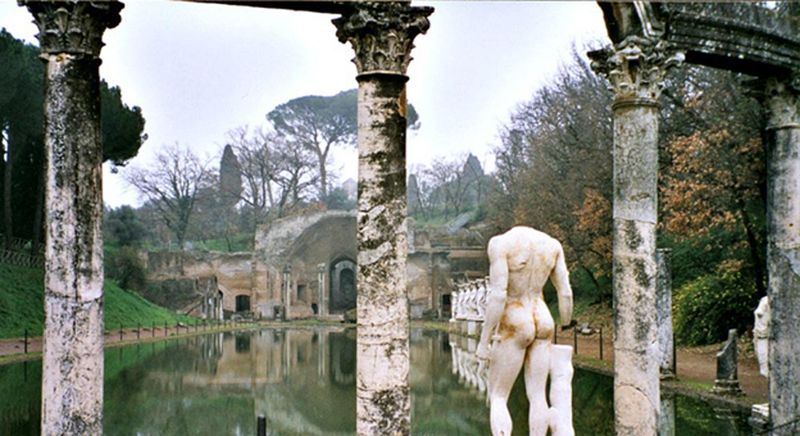
Located near Rome, the Villa of the Antonines harks back to an era of imperial grandeur. Its arches and gardens reflect the opulence associated with the Antonine dynasty.
The villa’s proximity to a river provided tranquility and resources, vital for its survival through the ages. Nature’s embrace surrounds the ruins, creating a serene backdrop.
This villa, once a symbol of power, now tells tales of survival, echoing the resilience of Rome’s imperial past.
Villa of the Mysteries

On the outskirts of Pompeii lies the enigmatic Villa of the Mysteries. Famous for its well-preserved frescoes, it offers a glimpse into the secretive rites of ancient Rome.
These vibrant paintings, shrouded in mystery, depict rituals that continue to intrigue historians and visitors alike. The villa’s allure lies in its ability to preserve these ancient secrets.
Surrounded by lush greenery, the Villa of the Mysteries captivates with its air of secrecy and artistic resilience, standing strong against the passage of time.
Villa of Maxentius

Nestled along the Appian Way, the Villa of Maxentius captures the eclectic nature of Roman architecture. Known for its racecourse and majestic statues, it embodies entertainment and grandeur.
Its panoramic views once inspired awe among visitors, telling tales of chariots and cheering crowds. Though much is now in ruins, the site’s energy remains palpable.
As the sun sets over these ancient remains, the villa still whispers stories of ambition, entertainment, and survival against the odds.
Villa of the Mysteries
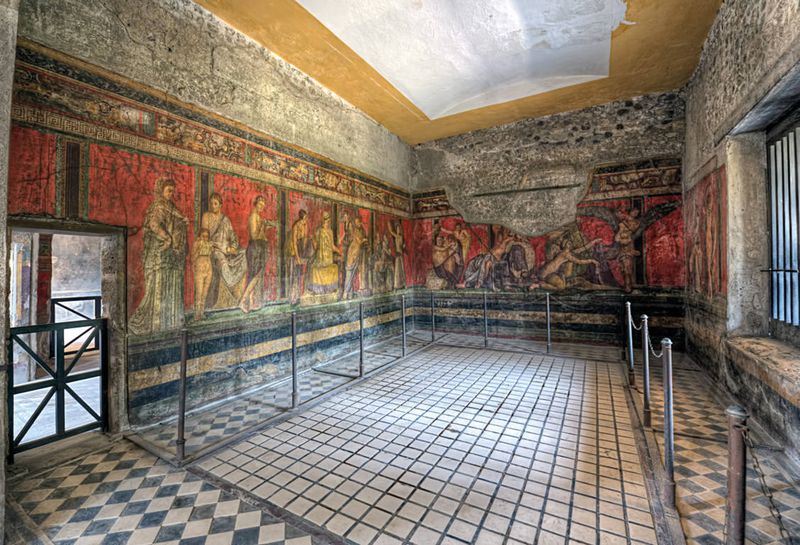
At Pompeii’s edge, the Villa of the Mysteries stands as a sanctuary of ancient art and mystery. Known for its intricate frescoes, it reveals hidden aspects of Roman life and rituals.
The frescoes’ vivid colors and themes invite speculation and study, drawing historians and enthusiasts into its fold. These walls, vibrant with history, preserve secrets long forgotten.
Encased in lush gardens, the villa captivates with its mysterious allure, standing resilient through the tides of time.
Villa of Domitian
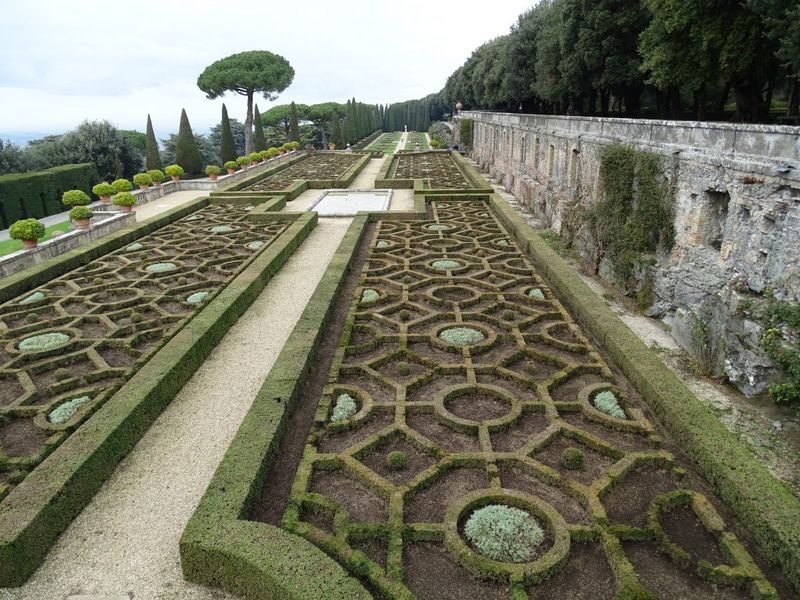
Perched on the shores of Lake Albano, the Villa of Domitian showcases imperial extravagance. Its grand entrance and gardens are remnants of Domitian’s ambitious vision.
Statues and mosaics once adorned its halls, reflecting Rome’s artistic zenith. Though time has worn much away, the spirit of luxury endures within its ruins.
Visitors are drawn to its historical allure, finding echoes of a past marked by power and survival, amidst the tranquil lakeside setting.
Villa A of Oplontis
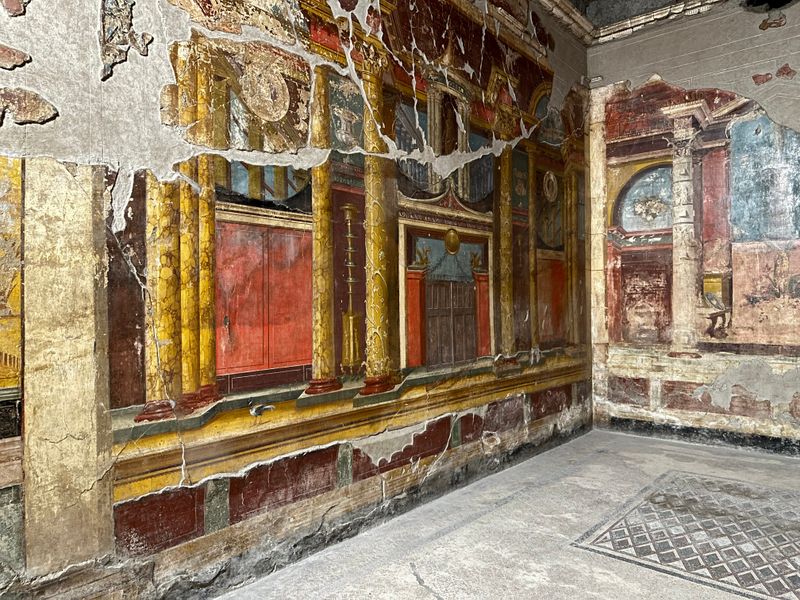
At Torre Annunziata, Villa A of Oplontis stands as a symbol of opulence and artistic expression. This villa, thought to belong to Nero’s wife, Poppaea, boasts of intricate frescoes and expansive gardens.
The central courtyard, once a testament to Roman luxury, remains an architectural marvel. Despite the passage of time, its grandeur continues to inspire awe.
Visitors are invited to explore its lavish halls and imagine the vibrant life that once flourished within these walls, a story of resilience and creativity.

